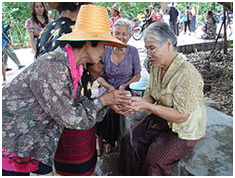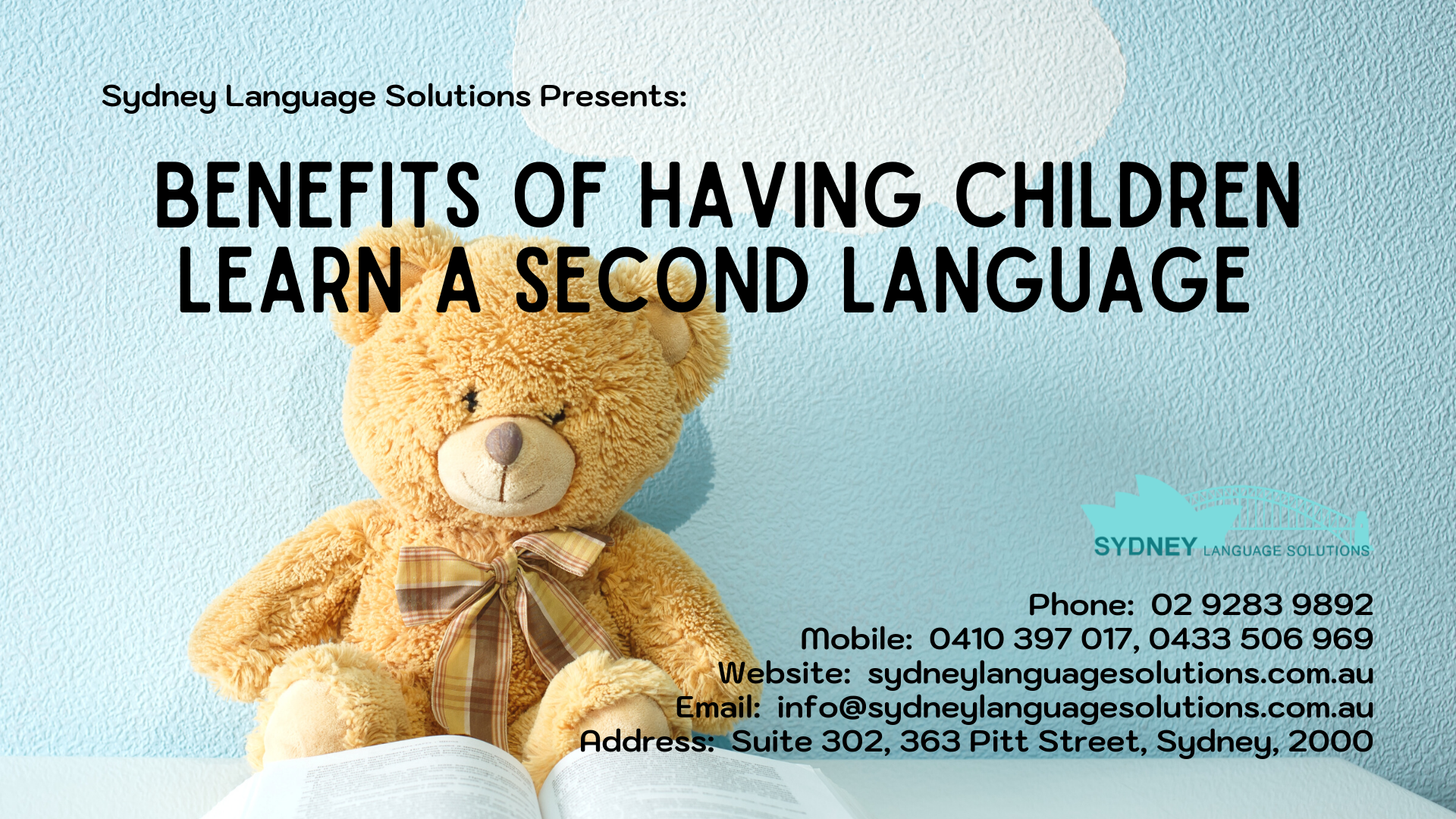Ways on How You Can Help Your Children Learn New Languages Faster
How you can help your child learn new languages faster:
- Make language learning a daily habit. Research shows that your child only needs 15 minutes a day to make progress while learning a new language. Some ways in which you can instill this habit in them is by making them listen to podcasts or watch a movie in a foreign language.
- Learn cognates. Languages like Spanish have a lot of words that we commonly use while speaking English. Learning these words will help your child transition better into the new language.
- Use flashcards and spaced repetition. Flashcards are proven to be the most effective way to memorize new languages. Flashcards use a concept called spaced repetition that basically prioritizes things your child does not know and helps them prioritize and work on their weak areas.
- Use a notebook and take it everywhere. Ask your kids to write down all the relevant vocabulary that you come across whenever your child is exposed to a new language.
- Speak the language from day one. There are 3 ways to achieve this. You can enrol your child in group learning in a good language school. This is great from a social perspective as your child will be studying with kids their own age and they can collaborate and work together on their skills.
This is where we can help you!
At Sydney Language Solutions we offer the best prices and deals for an atmosphere of fun and engagement in which your children can develop their language skills and aim towards a brighter future.
Advantages of Bilingual and Multilingual Children
INTERESTING FACTS ABOUT BILINGUAL/MULTILINGUAL CHILDREN:
– Better academic results: research has shown that bilingual/multilingual children can often concentrate better, have better problem-solving skills, understand language structure better and are better at multitasking.
– More diverse and interesting career opportunities later in life: employees speaking two or more languages can form better connections/relations with clients and other business partners. Therefore, multilingual candidates are preferred by employers.
– Children who speak more than one language have a better sense of self-worth, identity and belonging.
– Bilingual/multilingual children are said to be more educated since they can indulge in reading books written in various languages, enjoy movies and music in different languages.
– Children who learn foreign languages appreciate other cultures more and feel a sense of affinity while communicating with people from other countries.
BENEFITS OF LEARNING A FOREIGN LANGUAGE FOR CAREER GROWTH:
Learning starts at a very young age and learning new languages as a kid not only has a positive impact on your child’s personal growth, but it also gives them an edge in the professional world when they grow up.
Here are some advantages of learning foreign languages as a kid:
- Your kid will automatically become more attractive than other candidates when it comes to Global companies. In this dynamic world of globalization, employers are seeking candidates that are multilingual. International companies are trying t0 widen their reach across the globe and hire employees that can blend in with other cultures and fill in the communication gaps between the company and its clients.
- Career growth opportunities: being fluent in foreign languages doesn’t always mean your kid will have to go abroad. Many small local businesses prefer multilingual candidates who can help them explore new business opportunities and bring in more clients from other countries.
- Higher salaries: research shows that multilingual employees earn at least 10%-15% more than monolingual employees.
- Relationship building: having the ability to speak and understand different languages will allow your child to relate to various cultural groups at a personal level. Having a good relationship with colleagues is essential in a professional environment.
- Increased job opportunities: being fluent in foreign languages can be extremely beneficial for an individual’s professional growth. Many companies now require only employees who are bilingual or multilingual.
Benefits of Having Children Learn a Second Language
Why must children learn a new language from a young age?
- Experts say that children have more time and ability to pick up a new language faster than adults and develop a native-like pronunciation.
- Learning a new language also boosts a child’s creativity, problem-solving, critical thinking, and listening skills.
- In the long run, a second language will also be advantageous for them in the workplace where being multilingual gives one a competitive edge over others.
What makes our program different from other community language schools?
At some community language schools, the programs are designed to be beneficial if only both parents speak that particular native language at home for the children to have a chance to hear and practice the language. While this is advantageous for some children, others with only one parent who speaks language cannot have the chance to hear from their parents’ interaction. In fact, there are numerous households in Sydney with only one bilingual parent. In such circumstances, going to a language class with a structured program will help the students.
At Sydney Language Solutions, we offer language courses for children from all backgrounds, regardless of the number of parents who speak that language at home. These courses are also tailored for children whose parents are second-generation language speakers in Australia, or those parents who do not have enough background knowledge in speaking, reading, and writing their language to teach their children at home.
Thai Lesson at Sydney Language Solutions
Thai Lesson,
Hello there, my Thai classes here we use the SLS material and hand out some other interesting materials that I find outside, in my class I encourage the students to always pronounce the Thai words over and over, this would help them get used to with the tone and rhythm, also make sure they pronounce it right. As some of you know that we have five different tones and the tone is so important in learning Thai. We do a lot of practicing in the class and try to make it fun.
I just finished the beginning 1 and 2 classes last month. They were enjoyable classes everyone cooperated well with the activities in classes and little homework I asked. Some had very interesting questions which is really helpful to me and other students. Questions from students are very important to me and the classes, they always show us another aspect and something that’s not in the materials. I always encourage them to ask any question about Thai even about our culture which I am happy to share. Some of them have Thai partners or friends so they often came up with the variety questions which I found them very interesting. Some of my students were going to travel to Thailand some have been there few times, we shared the information and advice. I guided them what sentences to use some tips in some circumstance. I also encouraged them to find the chance to practice their speaking for example; when they go to Thai restaurant try to order in Thai. The students arranged to continue the next class together and I hope to see them soon.
A new beginning 1 class just started last week they all made it well in the first class, I hope they enjoy the entire of the class and develop the skills get some knowledge from my class.
Apapat Promnee, Thai teacher.
Thai Cooking Workshop (October 2012)
Are you curious about our latest Cooking Workshop?
Check the video below, it’s taken from our Thai Cooking Workshop in October 2012.
Top 10 things to do with children in Northern Thailand
1. Ride an elephant
There are more than 20 elephant parks close to Chiang Mai. Enjoy bamboo river rafting, watch the elephants play soccer and paint, take a lumbering elephant trek or even a traditional ox-cart ride. See maetamanelephantcamp.com
2. Visit the Night Bazaar
Crowded pavements make stroller access difficult but children who can bear walking for an hour or so will enjoy the action. For dinner, try Lemongrass restaurant on Loi-Kroh Rd.
3. Take time out in a café.
A family could try out a new coffee house or café every day for a year in Chiang Mai. Children will love the coconut milk or fruit-based smoothies which cost $1-$2.
4. Eat Thai Style
Explore Warorot, Sanpakoi or Somphet markets for fresh fruit, delicious local sticky rice and other goodies. Find a stall selling Som Tam (Salty and sweet papaya salad). Plain sticky rice suits fussy children – ours loved spring rolls and soups, grilled lemongrass chicken and pork buns. Say “mai sai prihk” – no chilli – and “mai sai pong chulot” – no MSG.
5. Tweechol Botanic Garden
Fill an afternoon at this recreational park with paddle boats, giant whimsical topiary animals, a petting zoo and bikes for hire. There is a café playground and beautiful public swimming pool on site. About $15. See tweecholbotanicgarden.com.
6. Handicraft villages
Our girls were fascinated by traditional “saa paper” being made from bark pulp, then transformed into the beautifully painted parasols for which the Bo Sang region is famous. Other handicrafts showcased and sold in the area include silk, silver, rugs and teak furniture. See absolutelyfantasticholidays.com
7. Chiang Mai Night Safari
Families can pat exotic animals such as white tigers and Malagasy lemurs, then ride on open-air buses to watch and feed hippopotamus, elephants, zebras and other animals. From $55 for a family of four. See chiangmainightsafari.com
8. Chiang Mai Zoo
A sprawling, clean affair, with a diverse combination of animals. About $10 a family of four, more to see the pandas, walk South-East Asia’s longest tunnel aquarium or have a mid-Thailand “snow” experience. See chiangmaizoo.com
9. Mae Klang Waterfall
About 30 minutes’ drive from the city. Safe and clean for a free afternoon of paddling in rock pools with local kids.
10. Trek to visit the hill tribes
An authentic trekking experience that suits families rather than 20-year-old backpackers is available through Villa Anneloi. Stay at the B&B or with Belgian Annelore and her husband, Loi, who is from the local Karen hill tribe, and their three boys in a homestay environment. Custom-tailored camping treks for families with children from four years. See villa-anneloi.com
Source: escape.com.au
Do Thai people eat “Pad Thai” everyday?
This is a question I’ve been asked for several times from my foreigner friends. The fact, that “Pad Thai” is the signature dish, most well-known out of other Thai foods. Every Thai restaurant must include it in their menus and as much being most popular dish being ordered from dinners.
I often laugh and throw the answer that NO, Pad Thai is not a staple dish that we cook to eat in household. Pad Thai is commonly sold and served in street food stalls and restaurants.
In Thailand, you can find many roadside food stalls or restaurants that are specialised in cooking Pad Thai and only serve it as a signature dish, or perhaps sell with some other noodle dishes such as Pad See Ew.
I noticed that Pad Thai being served in most restaurants in Australia has slightly more in color and flavour than originated Pad Thai. And I was so skeptical to find out why, so I tried to observe how it was cooked when I was working part-time in a Thai restaurant (It’s a must do when Thai students come to Australia!)
The secret is “tomato sauce”, to make the dish more appealing to Australians; tomato sauce is being added in most of Pad Thai.
However, my Australian friends do prefer the authentic taste Pad Thai where they had tried on their Thailand visits, especially the way it is being served from street stalls. Real taste, real made, real Thai street food style!
-Samantha Torsuwan
Let’s get wet in Song kran Festival!!

Songkran is a Thai word that means “move” or “change place” as it is the day when the sun changes its position in the zodiac. Songkran or Water festival in Thailand is coming in mid of April between 13th -15th which is the hottest month of the year. As people believe water will clean away bad luck. In the other hand water is cool down for this hot peak season.
Before Thai is adapted to international New Year. Songkran is traditional Thai new year celebrate by visiting temples, sprinkling water on Buddha images in reverence, and sprinkling water on each other’s hands as an act of wishing good luck. During Songkran occasion Bank, office and family related business all most close. A lot of Thai resident are go back home to their family. This is an occasion for family and friend re-unions and spending time together by religion activities such as go to temple in early morning to pray and bathing the Buddha image by pour fragrant water over Buddha statues. In Thai culture is strict in respect senior people such as elder people, grandparent especially family members. A ceremony known as “Rod Naam Dum Hua” is young Thais seek the blessing of their elders by pouring scented water over their hands. After that it’s a water-throwing free-for-all – traditionally, the custom was to pour water gently over other people.
Some facts about Thai Language
Sa-wad-dii ka! Hello!
My name is Shaye, I’m teaching Thai in Sydney Language Solution for while now and here’s my first blog on this Website. I used to write several blogs before I moved overseas and maybe it started my interest in language.
For my first blog entry, I’d like to tell you several facts about Thai Language.
1. Thai is a tonal language
I’m pretty sure many people and schools talk about this. Getting the tone right is very important in our language. It’s not just about the accent but it’s about the actual meaning of the word. We have many jokes about how people get the tone wrong and it got translated into something totally weird (or extremely funny). The most common one is:
 maa1 (มา) means to come
maa1 (มา) means to come
and
 maa5 (หมา) which means dog.
maa5 (หมา) which means dog.
Now that you know about this fact, you better not get the tone wrong – ever!
So, if you are thinking of getting your own lessons, make sure those books have tone marks on them.
2. Thai words are repetitive
I did not realized this until one day; I got a requested from a friend to translate a beautiful Thai song. The translation was so cheesy and repetitive in English and it just sounds awful. My students also pointed this out, and so what I told them was…
“Thai language is very repetitive and exaggerative.” – it’s true, we love it!
In Thai, you can repeat adverbs and adjectives as much as you want until you are happy with how you want to exaggerate the situation or story. Such as;

I am so so so so so so so so so so so so so so so so so so so hungry – and more. Also, sometimes we drag the word longer, in order to exaggerate it.
3. Speaking Thai and Writing Thai are not the same – mostly.
 There are many reasons why you should learn Thai with a native speaker and not with books or recorders but one of the most important reason why is because the way we write and speak are not the same. You could still use any books out there to learn Thai or from many clips on Internet these days, but after a long search I’ve found that over 90% of them are not useful for speaking.
There are many reasons why you should learn Thai with a native speaker and not with books or recorders but one of the most important reason why is because the way we write and speak are not the same. You could still use any books out there to learn Thai or from many clips on Internet these days, but after a long search I’ve found that over 90% of them are not useful for speaking.
You will be able to understand, but you will hardly hear us speak that way – so why waste it in learning those?
4. Thai language is all about culture, emotion and respect.
Now, since I talked about speaking Thai and writing Thai, I cannot miss talking about what our language is based from. If you know a little bit about Thai language, you’d know that we have a polite particles (ka – for girl and krap – for guy) we put in the end of sentences (there are many others ending particles but polite particles are only these two). We will change the way we speak (wordings and sentences structure) depending on who we are talking to or the situations we are in. Casual talk, is one thing, Family talk is another thing and talking to Monk is totally different. But mostly, all of them based on respect you have towards another person.
Once you learn it, you’d be amazed in how many cultures we’ve putting in our language. Personally, I’d say that people who able to learn Thai effectively are people who understand our culture base.
So, learning in class together with other students are the perfect way of learning Thai effectively. I enjoy explaining the class about our cultures and situations a lot. It’s probably one of the best parts about teaching Thai to foreigners. If you’re gonna learn it, I hope people would learn them right. If there’s any questions about Thai language, I’m more than happy to answer and explain to you!
That’s it for now! Bye-ka!
Shaye.








Latest Comments